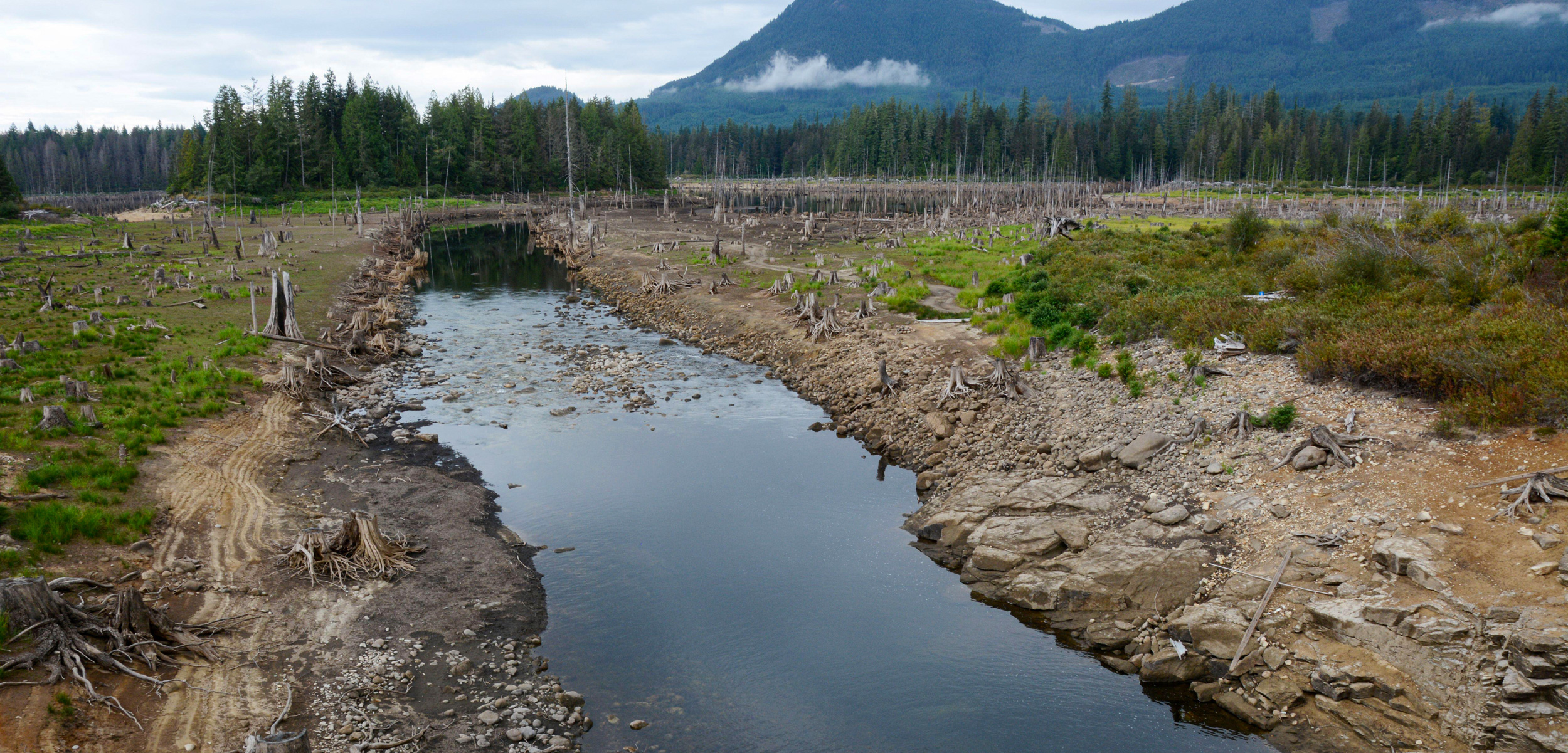Salmon Need Trees
A study shows that watershed logging can be as bad for salmon numbers as increased predation in the ocean.
Article body copy
A new study stands as a striking reminder that logging watersheds has an outsized impact on salmon and trout.
Led by Kyle Wilson at Simon Fraser University in British Columbia, the study looked at the successes and failures of five species of salmonids in the Keogh River (called Giyuxw by the local Kwakiutl First Nation) on northern Vancouver Island. For steelhead trout, the salmonid Wilson and his colleagues had the most data for, the problems the fish faced in the BC river hit the population just as hard as the challenges they faced out at sea. Wilson suspects the same holds true for other species with similar life cycles.
“Most people point to marine impacts as the biggest thing affecting salmon survival. This counters that,” Wilson says.
Chinook, coho, and steelhead populations in the Salish Sea have declined by up to 90 percent over the past 40 years. The Committee on the Status of Endangered Wildlife in Canada deemed several populations of steelhead as endangered in 2020. Unpicking exactly how and why fish are crashing has proved hard. Whatever happens to the fish out at sea has been seen as something of a black box, so much recent research has focused on marine survival. Those efforts point to multiple culprits for declining salmon numbers, including climate change, overfishing, reductions in the salmons’ food, and rebounding populations of seals and Steller sea lions that gorge on the fish. Wilson’s research, however, highlights the need to keep our eyes on terra firma.
Logging has long been known to have big impacts on the well-being of fish. Watershed logging was improved after the 1990s “War in the Woods” in British Columbia—salmon streams are better protected under regulations now—but remains a concern. Reducing shade over rivers can boost water temperature, which can be good or bad for spawning fish. Removing roots loosens soils and causes turbidity. Fewer logs may fall into streams, reducing the number of pools and turns that salmon like. A recent study by David Reid, completed when he was a postdoctoral researcher at the University of British Columbia, found the full impacts of logging can take a surprisingly long time to kick in. “It might take decades,” he says.
Wilson’s paper aims to weigh up riverine against marine survival. “It’s nice to see these components linked together,” says Reid.
Wilson and his colleagues looked at the numbers of baby fish in the river traveling out to sea, and the number of adults returning to the river to spawn. The populations of steelhead, cutthroat, and Dolly Varden salmonids dropped dramatically over the study period from 1976 to 2015: steelhead adults declined by about 80 percent and juveniles by about 90 percent. Only pink salmon, which spend most of their life in the ocean, stayed steady; coho declined moderately.
The team then crunched those numbers against a host of forces that influence fish survival. For their time in the river, that included air temperatures, rainfall, and how much area had been logged any time over the previous 15 years. At sea, they looked at factors including seal numbers, ocean temperature, and climate factors like the North Pacific Gyre Oscillation index that can affect nutrient levels.
From their calculations, the researchers found the vast majority of problems at sea were associated with species interactions: being eaten by predators, or competing with each other for resources. In rivers, the vast majority of the impact was from logging.
“The logging footprint explained a ton of the baby salmon productivity,” says Wilson. If all other factors, like temperature, had stayed constant over the study period, logging would have driven the number of baby steelhead born per mother fish down 97 percent, he says. It was 98 percent for coho, and 99 percent for cutthroat.
Looking across all stages of the fish’s life cycle is important, says Jacques White, a biological oceanographer and executive director of Long Live the Kings in Seattle, Washington, a nonprofit that aims to restore wild salmon. The organization and its partners have just completed a US $23-million five-year project looking at the issues affecting marine survival of salmon in the Salish Sea, which highlighted predators and food availability as major factors, along with pollutants in some estuaries. “What I really want to do next is take a hard look at climate change and how it’s going to affect salmon onshore, near shore and offshore,” says White. The relative impacts are often different for different species across different watersheds, he notes.
In June 2021, the Canadian government announced a CAN $647-million Pacific Salmon Strategy Initiative. “The first big push was a bunch of commercial fishery closures,” says Wilson. Forestry management, he says, needs to be emphasized, too.
One problem in Canada, Wilson says, is that the Province of British Columbia regulates things like watershed activity, while the federal Department of Fisheries and Oceans regulates things that happen at sea: “These two agencies are very happy blaming each other for what they can’t control.”

